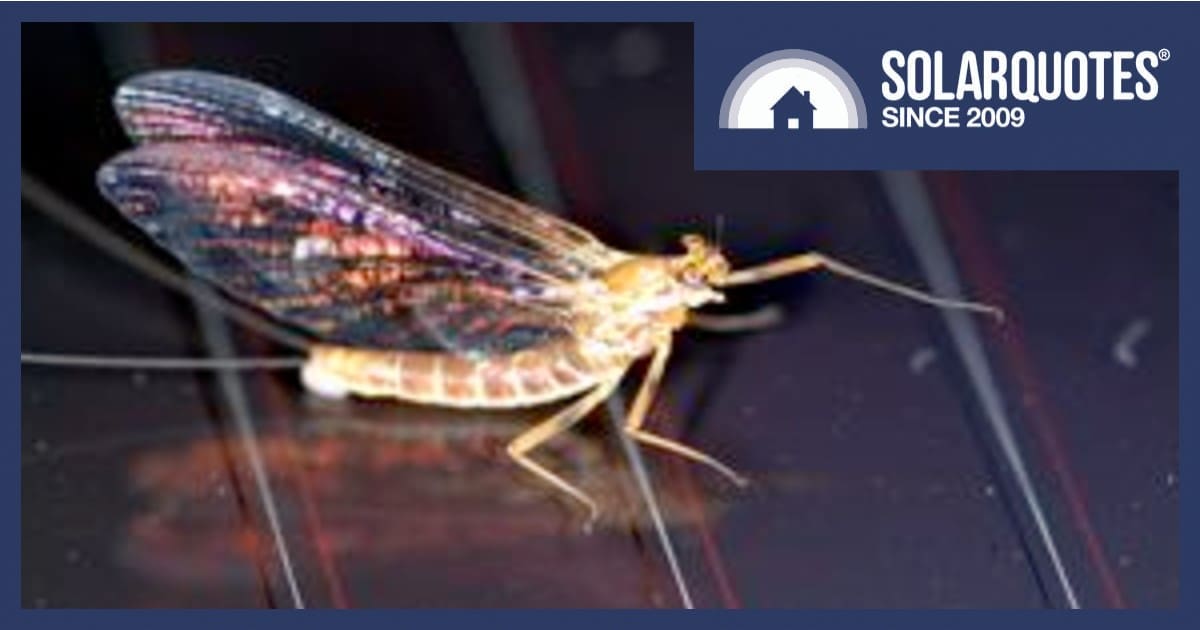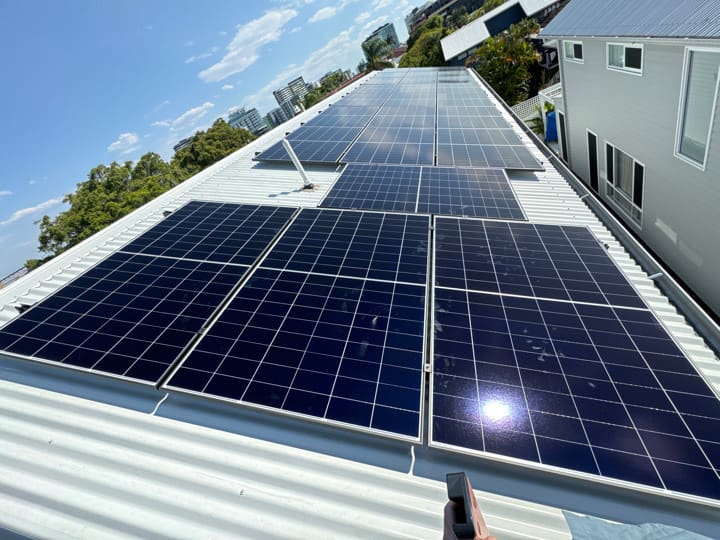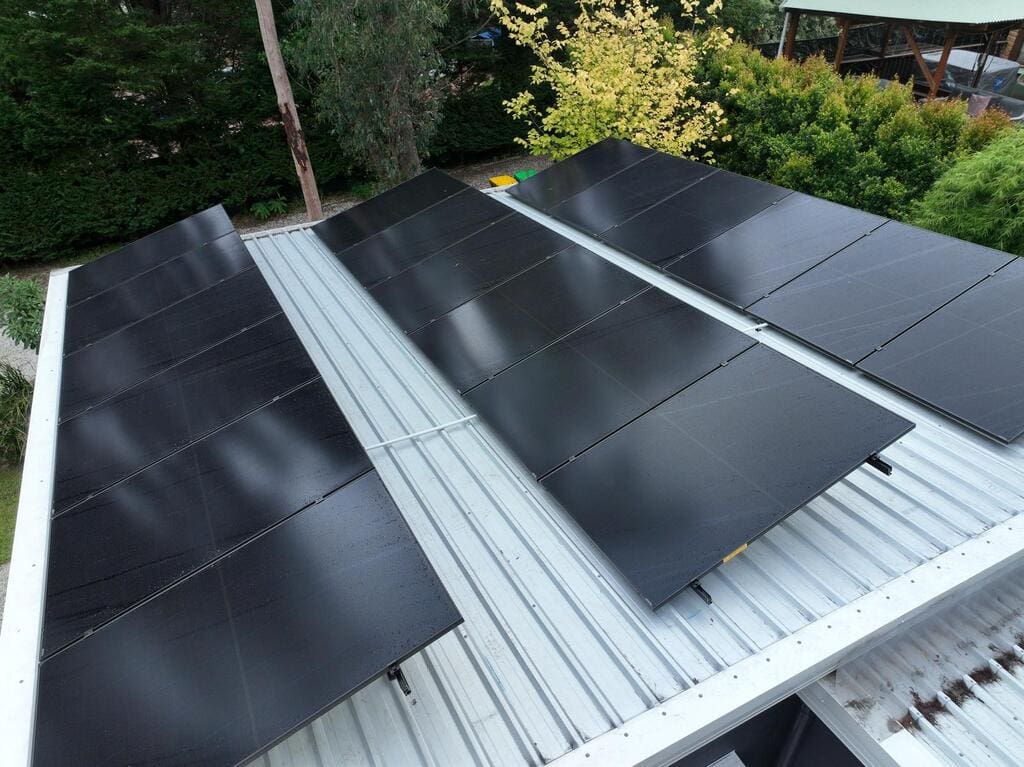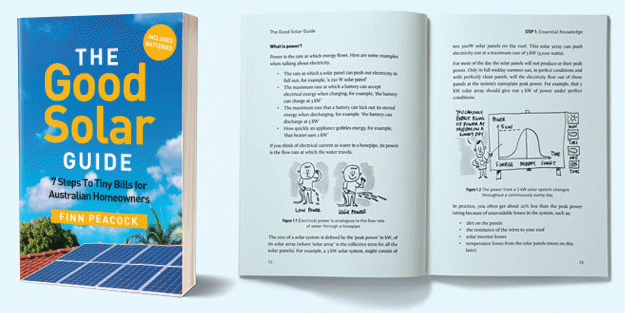 Plenty of people get solar to do their bit for the environment. Although renewables are far better for nature than fossil fuels, a new book details the little-known impact that solar panels have on insects, birds and bats. Here’s how to make sure your panels aren’t part of the problem.
Plenty of people get solar to do their bit for the environment. Although renewables are far better for nature than fossil fuels, a new book details the little-known impact that solar panels have on insects, birds and bats. Here’s how to make sure your panels aren’t part of the problem.
An eco-conscious homeowner installs solar on the roof to help the energy transition, and also creates a pond in the backyard to benefit the local ecosystem. Aquatic insects on the first flight of their life are lured from the pond onto the solar panels on the nearby roof, which they mistake for a water body suitable for laying their eggs.
It is a scenario imagined by ecologist Menno Schilthuizen in his new book The Urban Naturalist, which explores how citizen scientists can examine the impacts of human activity on ecosystems, such as the relationship between some solar panels and insects.
Many aquatic insects have vision that can see polarised light, which helps them find water sources. Solar panels also emit this form of light, luring the bugs in like moths to an electric light. The eggs they lay on the solar panels have no hope of survival, contributing to a global decline in insect populations that could upend ecosystems.
These insects in turn attract the bats that feed on them, subsequently being connected to a rise in bat collisions with solar panels, with research underway into similar potential impacts on birdlife. One of the many good reasons it is bad news to attract birds to panels is the damage they can do to solar systems.
The threat some solar panels pose to insects is likely to be particularly pronounced in Australia, Schilthuizen tells SolarQuotes:
“Since using circular polarisation as a means to detect water bodies is such a general property of winged freshwater organisms worldwide, I am sure the same happens in Australia … in a country where water bodies are few and far between, it is likely that the impact will be even larger there.”
White Gridding Greatly Reduces Impact

Solar panels with white gridding have a much lower impact on insects.
Impacted insects include dragonflies, damselflies, mayflies, water beetles and water bugs. There is a solution, however: purchasing solar panels with white gridding, particularly in combination with anti-reflective coatings.
“Any solar panel that has white gridding between the cells (provided the grid lines are at least a few millimetres broad and non-polarising) would have a much reduced impact on water insects and birds,” Schilthuizen says.
Research into the issue by scientist Gabor Horvath found the attractiveness of the solar panels to insects is reduced up to 26-fold when white borders crisscross the panels, dividing them into smaller segments.
Horvath found that “although solar panels can act as ecological traps, fragmenting their solar-active area does lessen their attractiveness to polarotactic insects.”
Scientists have also found that certain textures or coatings can mitigate the issue, although no solar panel brands have promoted this as a feature.
Another benefit of white gridding rather than all-black panels is that the latter perform slightly worse as they heat up more.
Many brands of solar panels offer both white gridding and black options – the latter will generally include the phrase ‘all-black’ in the name.

An example of all-black solar panels.
Citizen Scientists With White Tape
In Schilthuizen’s book, which covers how everyday people can get involved in their own citizen science projects, he recommends people start a neighbourhood initiative to further contribute to knowledge on the subject:
“Find some neighbours who have both ponds and solar panels, apply strips of white masking tape to half the panels, and spend a comfortable evening (beers and snacks are allowed) sitting on their roof collecting and identifying water insects as they descend (or not) on the panels. If you manage to replicate Horváth’s results, you have solid scientific leverage to convince all your neighbours … and to help make the neighbourhood a better place. That is what community science is all about.”
SolarQuotes in-house installer Anthony Bennett cautions against leaving the tape on long-term however, as it could inhibit solar performance and pose a potential safety risk.
To read further on this subject, The Urban Naturalist is out now. For more on what else to consider in the purchase of solar panels, read our detailed guide that covers all the essentials.

 RSS - Posts
RSS - Posts



Presumably glass used in windows, awnings and skylights has the same polarising effect so why hasn’t this come up as an issue previously?
The issue of insects confusing another artificial surface for water isn’t confined solely to solar panels, although the research into this phenomenon indicates the source of polarised light needs to be a horizontal surface that is dark in colour.
This is clearly an important issue, and should affect decisions of what panels to use — especially near ponds, dams, rivers …..
But I question ecologist Schilthuizen’s physics — particularly on light polarization by reflection. He is quoted above as stating:
“Since using circular polarisation as a means to detect water bodies is such a general property of winged freshwater organisms …”
However, it has been known since “antiquity” (the 1800s if not earlier) that reflection induces PLANE, not CIRCULAR polarization. This fact can of course be found in any decent text on physics, or of optics
Hi Bernhard,
I’m not an expert in optics, beyond observing LED “conversions” of old car headlights are a joke.
However I’d be interested to know if the anti reflective coatings on modern solar make them less attractive to bugs.
Old thin film panels were made with smooth glass which reflects in the same mirror fashion that car windscreens and paint finishes do.